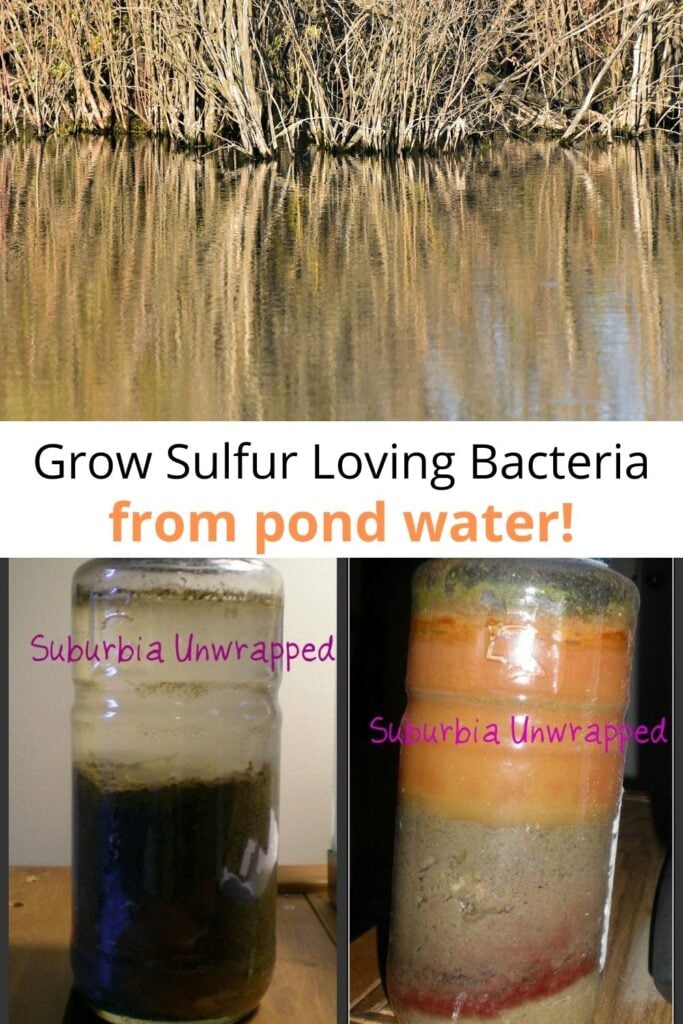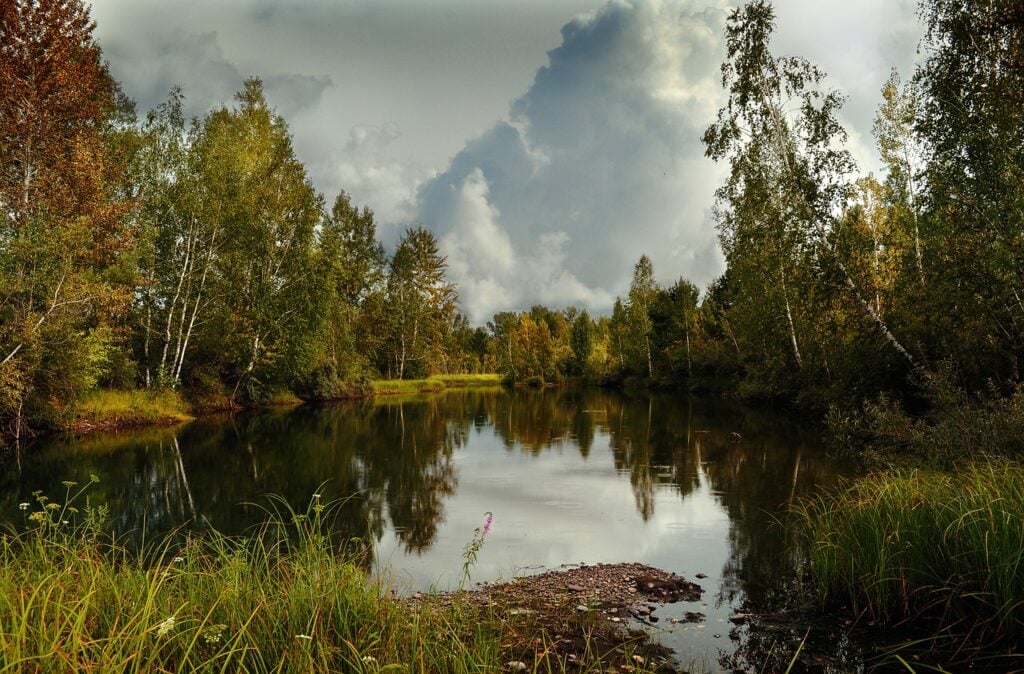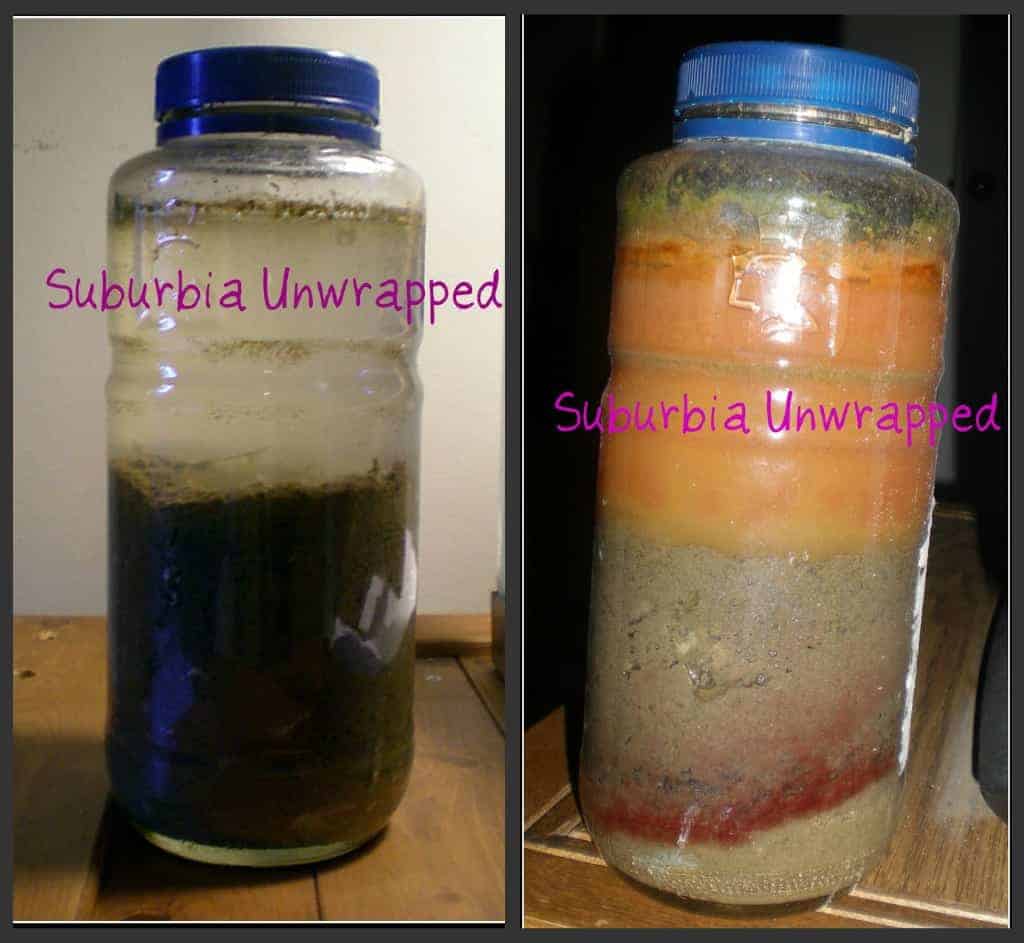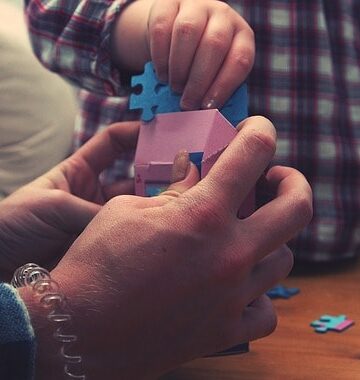Posts feature partner companies & may be sponsored. Post contains affiliate links & I will be compensated if you make a purchase after clicking on links. As an Amazon Associate I earn from qualifying purchases.
Last Updated on January 16, 2022 by Diane Hoffmaster
Looking for an easy science experiment for kids to teach them to love STEM classes? Learn how to build a Winogradsky column and grow sulfur-loving bacteria with your children!
Growing bacteria in Petri dishes is easy. But if you want bacteria experiments for kids that are a little bit more complicated, this is a great way to have some science fun right in your own home.
This would make an excellent germ science experiment for a science fair project. It teaches kids that bacteria are everywhere, even in their own backyard pond.
Table of Contents
Teaching Kids to Love STEM Subjects
My husband and I both have degrees in microbiology. While I haven't done much with my degree since having kids, I feel it is important to share our love of science with our children. Personally, I don't have a lot of faith in the ability of the public school system to prepare my kids for college.
Unfortunately, I can't afford private school and would probably strangle my children if forced to home school them so it is off to public school they go. We frequently do easy science activities at home and have an extensive collection of books to help us come up with new ideas. Here is a very easy science experiment that you can do at home.
You need only a few easy to find supplies but you will have to have PATIENCE to see the results. We are talking a few months worth of patience! But, the results of this awesome experiment really are rather astounding!
To build our Winogradsky Column, we followed the directions from The Science Education Resource Center. This is EASY, you and your kids can do this together and have fun while learning something totally cool.
How Does It Work?
For this experiment, you are building a Winogradsky column which is a simple device for culturing a large variety of microorganisms. It was invented by Sergei Winogradsky and contains pond mud and water mixed with a carbon source such as newspaper, blackened marshmallows or eggshells.
To facilitate bacteria growing, you will also need a sulfur source such as gypsum or egg-yolk. Incubating the column in indirect sunlight for months results in a gradient of different oxygen levels, nutrient types, and sulfur levels. The bacteria collected in the pond water will thrive in the layer they do best in.
You can read more about the science behind this experiment at the link above. It will explain all about the different gradients and where certain bacteria prefer to live. Detailed directions are included below.
NOTE: The column is a rough mixture of ingredients so exact measurements are not critical.
How to build a Winogradsky Column
While I am sure you could buy a fancy science kit for collecting bacteria and growing them, it really isn't necessary to spend any money. This science activity can be reproduced with only the things you have lying around your house.
Supplies for growing bacteria:
1. A tall glass or plastic container (we used a large glass peanut jar that we washed and dried)
2. Small shovel for scooping mud
3. Small bucket to carry mud and pond water in
4. Carbon source: Vegetable materials such as shredded hay, grass clippings, shredded newspaper, sawdust, corn starch, oatmeal, will work fine, use your imagination. (we used oatmeal)
5. Sulfur source: elemental sulfur, calcium sulfate, magnesium sulfate, raw or hard-boiled eggs, or cheese. (we used a raw egg!)
6. Stick for stirring
Directions for this science experiment:
1. Head out to your closest pond with a bucket and shovel. Collect a small amount of mud and pond water. You only need enough to fill your container so don't worry about getting a whole bunch. Try not to get a lot of sticks or rocks. You want relatively 'clean' mud!
2. Back in the kitchen, grab a small bowl and mix a couple of scoops of pond mud with the carbon and sulfur sources. We used about 2 - 3 cups (maybe?) of mud with one raw egg and about ½ cup of oatmeal. Mix the concoction thoroughly.
3. Add some pond water to your incubating container and add the soil mix from above a little at a time, using a stick to pack the material in the bottom of the column. Try to avoid air bubbles as much as possible.
4. Add water and soil mixture until the column is about three-fourths full.
5. Leave some air space above the surface of the water and cover the column with plastic wrap or a very loose lid.
6. Place in a sunny location but NOT in direct sunlight. (ie in a sunny room but not on the windowsill) and WAIT.
Our Winogradsky Column Results
Here are photos of our experiment. The first photo (on the left) was taken in September of 2011 and the photo on the right was taken in February of 2012. Incubation time was about 4 months but we started seeing small changes after about 8 weeks.
Each portion of the column allows for the growth of very specific types of organisms. See photos and descriptions of each zone HERE but take a close look at my picture. See that RED line in the photo on the right?
That is a very high concentration of purple sulfur bacteria. They love to grow in areas that are low in oxygen but high in sulfur. Just like the bottom of your Winogradsky Column!
This organism is present naturally in the mud at the bottom of the pond, you are just increasing the concentration enough so you can see it clearly.
I hope you learned something interesting and are inspired to go out and explore the world of science with your children! If you decide to try this easy science experiment out for yourself, stop back by and let me know how it goes!
Take This Germ Experiment Further with Further Study
So, just growing bacteria from pond water is fun, right? But, don't let it stop there. There are dozens of bacteria experiments for kids to explore. Buy some Petri dishes with agar and grow bacteria cultures from your pond water. You can make your own nutrient agar if you want to buy an empty petri dish, however, that does add some extra time. Can you find bacteria in other bodies of water around your home?
This is a very impactful activity, even for young kids. Take this lesson further. Discuss the life cycle of bacteria as well as various growing conditions they prefer. Which ones like dark places versus those that thrive in extreme conditions.
Teach children about their immune system, antibacterial agents, washing hands, and how germs spread. Remind them that healthy habits like proper handwashing help prevent many diseases.
Provide Adult Supervision!
While this germ science experiment is fairly safe, please be very hands-on with your child when growing bacteria at home. Most bacteria experiments for kids are pretty harmless, however, harmful germs are everywhere.
Make sure you practice proper hand washing after working with the experiment supplies and pond water. And of course, the more hands on YOU are, the more you encourage questions and ideas for NEW science experiments to work on.
More Science Activities For Kids
Bacteria experiments for kids are fun but the field of science is HUGE! Looking for a few more science experiments for kids? Here are a few, whether you are looking for a science fair project for younger kids or just a fun, impactful activity to teach kids science at home.
- Kitchen Science Experiments: Our favorite kitchen science experiment for kids.
- Chemistry for Teens: A quick look at atomic mass lessons for older kids.

Diane is a professional blogger and nationally certified pharmacy technician at Good Pill Pharmacy. She has two college aged kids, one husband and more pets than she will admit to. She earned her BS in Microbiology at the University of New Hampshire but left her career in science to become a stay at home mom. Years of playing with LEGO and coloring with crayons had her craving a more grown up purpose to her life and she began blogging and freelance writing full time. You can learn more about her HERE.








Ellen Christian
I bet it would smell to high heavens if you opened it up! Neat experiment!
Have Sippy Will Travel Mommy Blogger
that is so gross, it's fab, lol
krystal
This is a fun way to teach your kids about microbiology.
Pam
That is pretty neat and pretty gross too!
Diane
yes, science is messy and icky and sometimes stinky but also a whole bunch of fun!
Virginia from That Bald Chick
Now that is cool! I'm sharing this in my homeschool group.
Cedrick Grageda
Thanks for the details on Easy Science Experiment: Grow Sulfur Loving Bacteria With Your Kid!, it will likely be truly beneficial.
Beeb Ashcroft
This is such a cool experiment!
Minta
This is something that my kids would love...
Also, stopping by from Pitch it to me.
Minta
Mary
Ya know, that was a freshman year microbiology lab experiment for me. I was just remembering it and thinking it would make a cool visual experiment for demonstrating soil bacteria to people. Good one.
Diane
Glad to have brought back fond memories! I was a microbiology major in college but we didn't do this particular experiment. Kids had fun with it at home though!